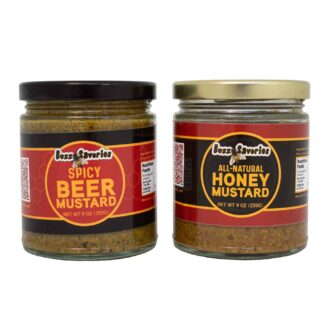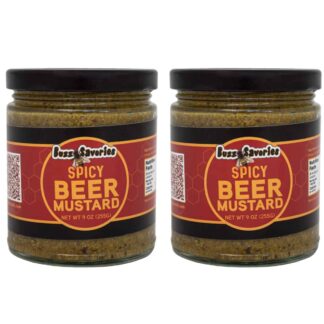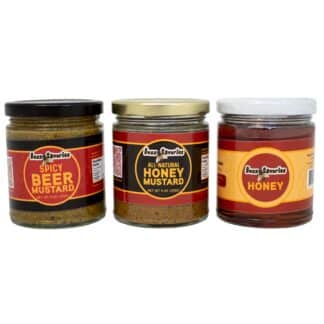Bee Biz - August 2022
It’s August, and work escalates for both the bees and the beekeeper. The bees are in the throes of collecting nectar, mixing, dehydrating, and storing honey for winter, whereas the beekeeper is researching the mite infestation hive by hive. The world has suffered a huge loss of honey production over several decades when the Varroa mite (Varroa destructor), originally a parasite of the Asian honeybee, gained the ability to infest the western honeybees commonly used for beekeeping.
But you can’t fight mites unless you know they’re there, so we are learning to count the mites in our hives.
The act of testing for Varroa mite infestation is almost comical. I’m smiling as I describe the process we apply to determine the number of Varroa mites per hive. To begin, we bought a simple plastic apparatus from Mann Lake Bee Supply consisting of a plastic insert punched with holes smaller than a bee, a clear plastic jar and a lid.
Oddly, Varroa mites lose their grip on the bees during a roll in powdered sugar, so we start by donning our bee suits, lighting up our smoker and pouring two tablespoons of powdered sugar into the canister. Then we open the hive and add several capfuls of bees into the insert, screw the lid on tightly, and gently roll the container to dust the bees in powdered sugar. We wait three minutes.
The results are quickly apparent. As we gently shake the powdered sugar onto a shallow dish of water, the powder sugar dissolves and the tiny mites — live mites — float to the surface to be counted. Too many mites per hive! We add “treat for mites” to our list of things to do after the honey harvest.
Lastly, the bees still drenched in powdered sugar and looking like ghost bees are returned to their hive. They stumble about for a second or two then reclaim their home. It’s just one more thing in the beekeeper’s journey. Humans can’t make honey on their own so the only thing left is to take care of the bees that can.
Bee Biz - July 2022
It’s July, which means our hives are bursting at the seams with busy bees. According to www.drbeekeeper.com there are approximately 60,000 bees per hive, and now that summer is in full swing, they are almost endlessly tripping to flowers for nectar.
An average worker bee will produce 1/12 of a teaspoon of honey in her lifetime. So, it takes 12 worker bees to produce a single teaspoon of honey! To produce ½ lb. of honey it takes about 30,000 bees traveling 27,500 miles and visiting more than a million flowers to gather the nectar required.
Our habitat garden looks great, by the way, but I can’t wait to see what it will look like next month!
Bee Biz - June 2022
June and the numbers of bees increase exponentially. We are checking hives to look for eggs and the white larvae nestled in uncapped cells (the beginning of baby bees.).
Worker bees require between 19 and 22 days to fully develop. Drones need 24 days and queens about 16 days to emerge from the egg cell. The hive produces worker bees all through June so that upwards of 6,000 bees are ready for the nectar flow in July and August.
We have a queen arriving soon, and we will split a successful hive to install the new queen in her own hive box. To split we steal 3-4 frames that are covered with nurse bees and include eggs and larvae. We lift these valuable frames out of the prosperous hive and replace them with empty frames then install the eggs and larvae into a box with the queen.
She will be in a tiny wooden and screen case and cared for in the case by 3-4 adult bees. We will leave her and her attendants in her case for 3-4 days so that the bees can become accustomed to her smell and identify her as their queen. When released she will get busy and lay approximately 2,000 eggs/day.
The National Honey Board reports that Americans use of honey as a sweetener is up 25% because honey is more than a sweetener. Honey, a natural product made entirely by bees and manufactured by bees offers minerals, vitamins, acids, pro-biotics, enzymes, and organic compounds in every spoonful. A definition of Honey – a complex super saturated liquid with 181 components holds true and cannot be replicated in a laboratory.
Comparing honey to the same amount of sugar, honey will taste 1 ½ times sweeter, thereby use less honey to achieve the same sweet flavor as sugar or maple syrup or corn syrup and stevia and other sweeteners on the market.
The flavor of honey reflects the flowers within 1 ½ miles of the bee hive. Have you tasted Buzz Savories honey yet? Everyone who experiences our honey becomes a fan because the flavor is drawn from flowers growing in the Platte River valley including early spring plum blossoms and chokecherry and elderberry to clover, alfalfa and mints through the summer and then August – sunflowers and goldenrod.
Eat well.
Bee Biz - May 2022
The month of May and the sun comes out to warm the air and the earth. Plums and chokecherries and mulberries and current bushes are blooming. Honey bees are on the fly every day that temperatures climb above 50 Degrees, and the wind blows below 35 mph!
Here at the Buzz Savories apiary, we restock hives that died out the winter of 2022 with packaged bees. We purchased a 3 lb. package of Saskatraz bees + a queen from Mann Lake, a beekeeping supply company in Minnesota. Characteristics of Saskatraz bees include resistance to varroa mites and winter hardy.
We bought 2 packages of bees from Gold Star bee company this spring. The Gold Star bees are labeled “mutt” bees meaning a very hardy mix of Russian, Italian, and Carniolan genetics with these characteristics:
- Good pollinator.
- Resistant to varroa mites.
- Winter well in colder climates.
We measure success in the number of pounds of honey made between mid-May and mid-August. Success depends upon hive populations. The queen needs to lay over 6,000 eggs and the nurse bees care for 6,000 bees as they grow from a larva to an adult bee. Bees need to access enough nectar to make 30# of honey/hive. It takes 2 million flowers to make 1 lb. of honey adding specifics to the often used term, “busy as a bee.”
-

Mix & Match Sets
$25.00 Select options This product has multiple variants. The options may be chosen on the product page -

Spicy Beer Mustard
Rated 5.00 out of 5$25.00 – $70.00 Select options This product has multiple variants. The options may be chosen on the product page -

The Sampler
$40.00 Add to cart
